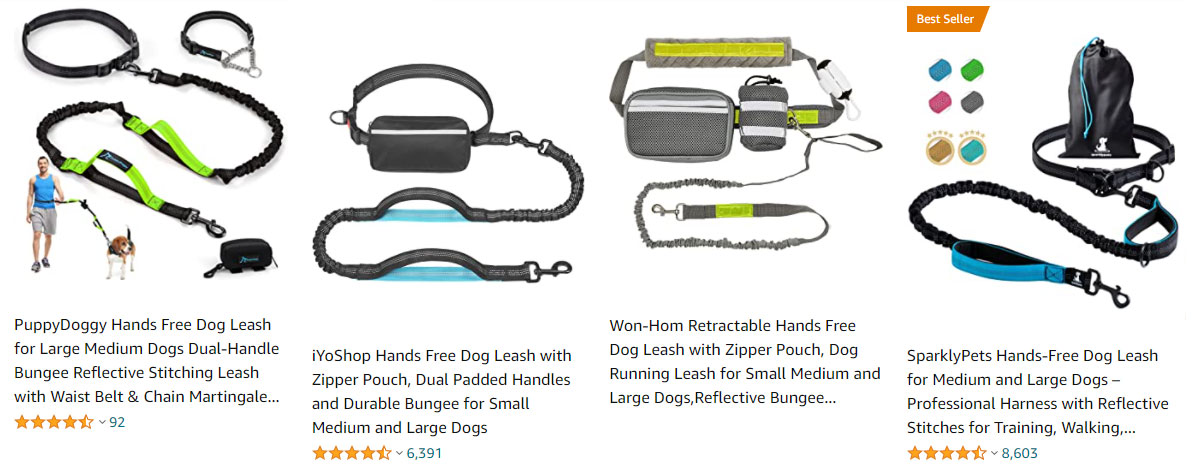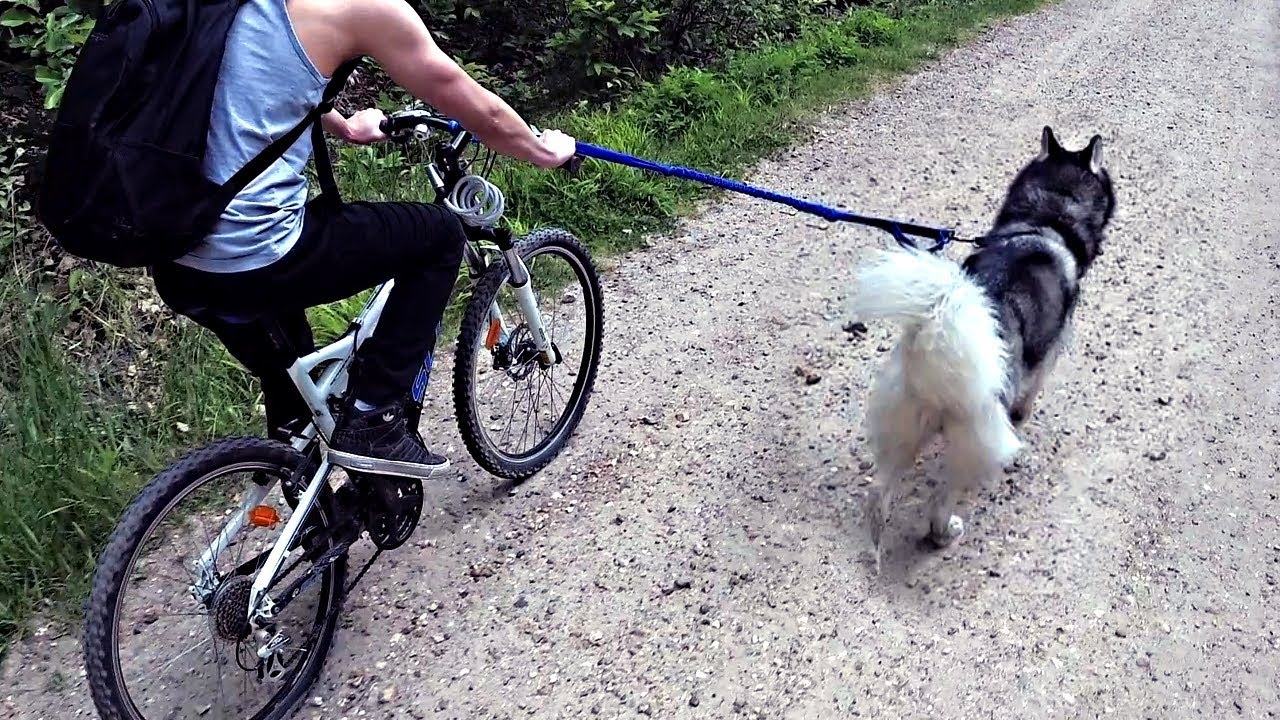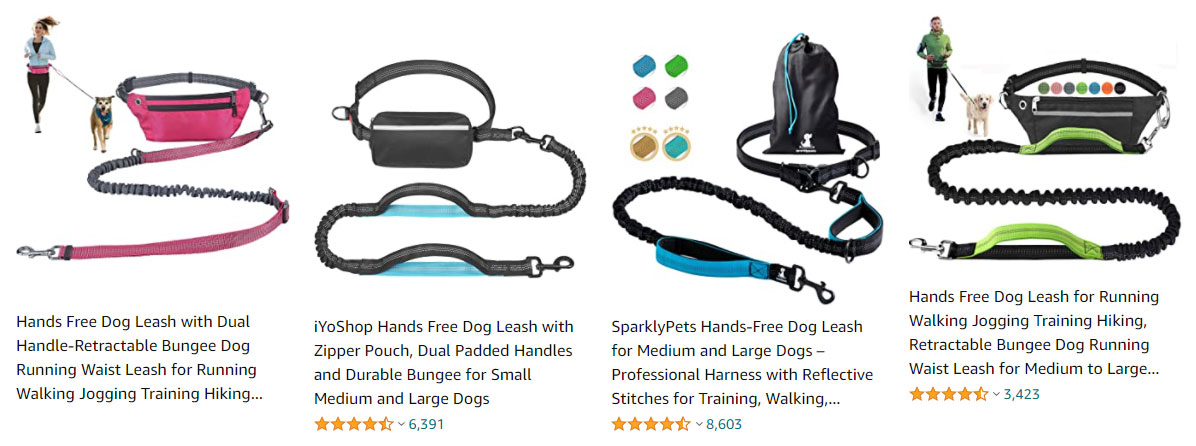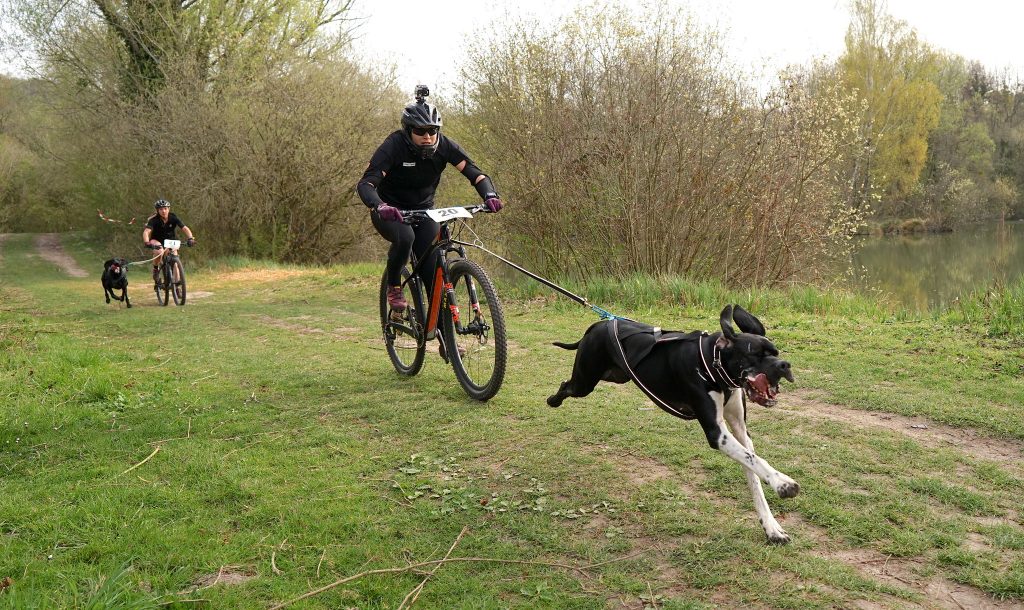Bike with dog
You dream of being able to go for a bike ride with your dog. Whether it is for pleasure rides, sport rides or even rides with your small dog in a basket for example, there are many tips to consider to make these moments of quality.
Why ride a bike with your dog?
Walking with your dog: it is very good, and even essential! Indeed, don't forget that a dog needs (even if he has a big garden) to go for a walk/outside, at least 30 minutes a day!
And yes, PER DAY! The walks must be daily and rich! It is not enough to take a 15 minute walk around the neighborhood in the morning and evening to exercise your dog!
Your dog needs to be exercised daily physically (walks, cani-cross, cani-vtt, etc.), mentally (fun AND educational games, learning, stimulation, occupations, etc.) and also, and above all, olfistically (walks in various environments, tracking/searching games, etc.)
In my opinion, riding a cani-vtt or simply riding a bike "quietly" with your dog has three main benefits:
- Interest n°1 : It allows the dog to have a good physical expenditure
- Interest n°2 : It allows to reinforce the relationship between a master and his dog through a common activity
- Interest n°3: Whether you do any type of walk, it will automatically reinforce the obedience and therefore the education of your dog!
If you offer your dog a bike ride in a basket, you will necessarily need to reinforce the static indications (sitting, lying down) and especially an indication of staying in place (not moving).
If you offer your dog a "leisure" bike ride, he will still have to stay focused and not smell the odors on the right and left! Indications to give up will therefore be essential ("you leave", "stop", etc.)
If you offer your dog a sporting activity of cani-vtt, you will have to teach him the indications of direction: left, right, in front, etc.
And of course we'll look at how to teach your dog directions in this article.

The necessary equipment :
To succeed in riding a bike with your dog, it is important to choose the right equipment so that this moment of riding is both safe and comfortable for you and your dog.
• Equipment n°1 : Equip your dog with a pulling harness, with an attachment on the back, between the shoulders. Caution: Absolutely avoid equipping your dog with a collar so that it does not injure itself while pulling. • Equipment n°2 : I strongly recommend (from experience), to use a fixed bar that you attach to your saddle so that your dog stays at a good distance from the bike and that there is no accident. This bar can be placed on the left or on the right but you can also place your dog in front (more used for the cani-vtt). • Equipment n°3 : It will also be essential to attach your dog with an elastic leash which will be used as a shock absorber and will avoid your dog to feel the jolts and thus to end up hurting himself. • Equipment n°4 : If you wish to walk your small dog in a basket, make sure to fix the basket well and to secure your pet: there are baskets with "grids" on top to avoid any leakage. Attention: The baskets are only suitable for dogs under 12kg.
How to start a bike ride with your dog?
Tip #1: It is often advisable to start by simply running with your dog! Indeed, we often start with "simple" cani-cross (acr there is less risk of falling or getting tangled in the wheels 😉 !
Tip #2: Get your dog used to the bike, by first going for a walk, but with the bike, so that he gets used to its presence. Above all, the goal of this habituation is that your dog will not want to eat the moving wheels.
Tip #3: The most important thing to do when starting this activity with your dog is to know your dog well enough to be able to anticipate his reactions (when another bike passes, when he sees another dog, etc.). Anticipation and indications of renunciation will be essential if you want to ride a bike with your dog in peace!
Tip #4: At the beginning, ride very slowly, don't let your dog get carried away and don't hesitate to brake and call your dog to order when he pulls too much for example.
Tip #5: At the beginning of each ride, don't go too fast right away. Just as we would warm up before an intense physical activity, the dog must warm up to avoid injury. To do this, go gradually!
Tip #6: Take regular breaks at the beginning so that your dog... and you too (let's be honest), can rest and especially hydrate.
Tip #7: Start with areas that are not very stimulating in terms of distractions (bikes, pedestrians, other dogs, cars, etc.), especially for learning commands.
Tip #8: A basic education will be essential to start riding with your dog.

How to teach your dog the educational basics for bike riding?
Attention, all the exercises/games/learning that I propose here are to be realized in good conditions, favourable to the learning of your dog. You must use methods and techniques that are respectful of your animal and in accordance with the learning rhythm of your dog!
In other words, you must respect the fact that at the beginning, your dog does not understand what you expect of him. Be consistent and question yourself if it doesn't work.
You should know that in 99% of the cases, if the learning doesn't "sink in" it is either a bad technique used, a bad attitude conveyed or an environment too rich in stimulations and not allowing your pet to concentrate properly.
But let's get back to the point, first of all you must learn to motivate but also calm your dog on demand. Indeed, certain moments of the walk will surely be conducive to acceleration, while others will eventually be dangerous and will require a return to the "pace".
- Motivating your dog: For excitement and motivation, it's simple! You just have to want it and to incite your dog to go, so the best indications will be "go" or "go!
- Calming your dog: On the other hand, for inhibition (which is the opposite of excitement), you will have to work on this beforehand (not just at the time of the walk because your dog will not understand).
- The "slow" indication: This starts by working on a simple walk on the leash and it is your attitude that will do everything! In fact, you need to work on your changes of pace when walking on leash with your dog.
- Learning directions: To teach your dog directions, you need to be rather rigorous and consistent in learning, both on your attitude and your vocabulary.


